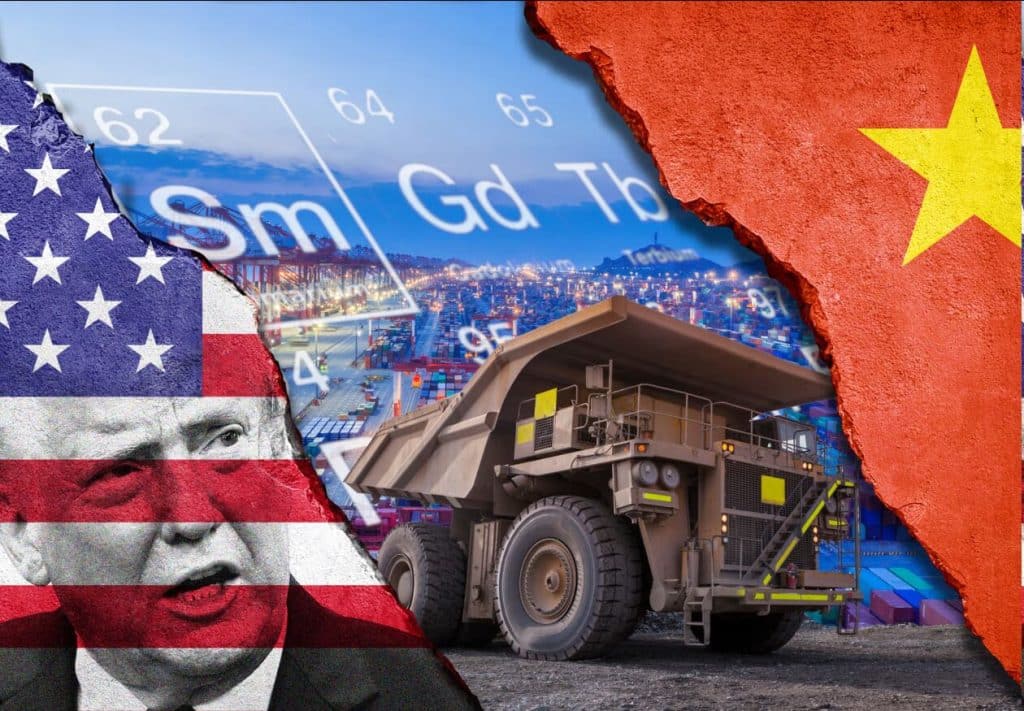Rare Earth Diplomacy: Where Are US-China Relations Heading?
Washington and Beijing have had a complex and multi-layered relationship in recent years, with economic and technological competition intensifying, while efforts are underway to de-escalate and rebuild trust.
Donald Trump’s trip to Asia last month highlighted the geopolitical shift in rare earth elements and critical minerals. These materials are essential in everything from electronics to smartphones and defense technology, and have become the oil of the 21st century in value.
In a world increasingly characterized by competition over technology and resources, the US government is also trying to gain diplomatic traction in Asia’s mineral markets. The result is a mix of symbolic diplomacy and the implementation of a practical framework that could create a strategic balance in critical minerals.
Trump met with Chinese President Xi Jinping in Busan, South Korea, on October 30; The meeting shifted its tone from coalition-building to conflict management. After years of tariff wars and technology disputes, both sides agreed to a one-year suspension of China’s export restrictions on rare earths.
Economic pragmatism over political confrontation
The symbolic measures are particularly important for a truce between the US and China. Rare earths have long been a tool of Chinese economic power, with Beijing controlling more than 70 percent of global production and a large share of the processing capacity.
By persuading China to ease export restrictions, Trump temporarily defused what many analysts said could have become an international resource crisis. The agreement also included parallel commitments: China would resume large-scale purchases of soybeans from the United States, while the United States would reduce average tariffs on Chinese imports from 57 percent to 47 percent. The message was clear: economic pragmatism, at least for now, takes precedence over political confrontation.
The 2025 rare earth diplomacy can thus be seen as a balancing act between competition and cooperation. It is worth noting, however, that both agreements were “frameworks” rather than enforceable contracts. Without a clear timeline for investment, clear targets for sourcing, or monitoring mechanisms, implementation of the agreement could stall as soon as political attention shifted to another issue. Moreover, the one-year duration of the China agreement underscores its fragility. Any new tensions could quickly disrupt exports in the supply chain.
Trump’s trip to Asia highlighted the inescapable fact that rare earths are now at the heart of global power politics. Whoever gets them will gain leverage over the industries and innovations that will define the century.
In the coming months, attention will be focused on whether these frameworks will yield tangible results.
In this sense, Trump’s recent trip to Asia was not just about trade or diplomacy, but also about the architecture of the next industrial age. It showed how alliances, rivalries, and resource control are intertwined in a new geopolitical order, and how diplomacy in the age of vital minerals has become a strategic imperative as well as a test of leadership.
Beyond geopolitical symbolism, the rare earth diplomacy that Trump’s Asia trip has produced will have enormous implications for global manufacturing.
Rare earth elements are the hidden engines of modern manufacturing. These invisible materials enable advanced semiconductors, medical imaging devices, high-performance magnets, electric vehicle motors, wind turbines, and precision-guided defense systems. Their role in manufacturing is so essential that even a minor disruption in supply can send ripples through entire industrial chains, raising costs and threatening national competitiveness.
Manufacturers in the United States and allied countries have long been vulnerable to fluctuations in the availability of rare earth elements. China’s historic dominance of the market for these elements has made the production and refining of more than 80 percent of the global supply of industries, from automotive to aerospace, dependent on a single, fragile, and centralized source.

